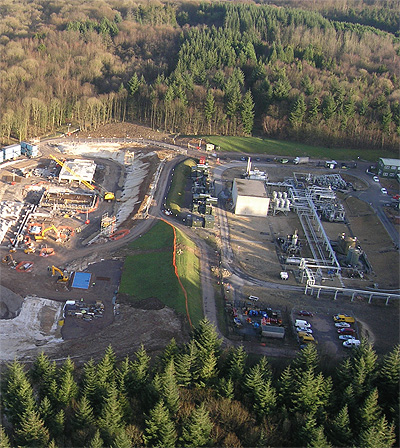
Star Energy
Going underground
Since Star Energy’s establishment in 1999 the company has been a successful, and important oil producer for the UK on-shore sector.
More recently however, the company has primarily focused on the development of underground gas storage facilities utilising depleted oil and gas reservoirs. With recent investigations estimating that by the end of the decade the UK will be importing around 50 per cent of its total gas requirements, such storage sites will play an increasingly important role in the UK’s future energy needs.
Dr. Melvyn Horgan, technical director at the business explains the company’s recent focus on the development of gas storage facilities: “Alongside our oil production operations we have been  developing our gas storage facility business, which started during 2005 when we converted the depleted Humbly Grove oil field that we own into a gas storage facility. This development represented a £75 million investment, has a ten billion cubic feet gas storage capacity, and is in commercial operation in conjunction with our client Vitol, which is a major oil and gas trading company.
developing our gas storage facility business, which started during 2005 when we converted the depleted Humbly Grove oil field that we own into a gas storage facility. This development represented a £75 million investment, has a ten billion cubic feet gas storage capacity, and is in commercial operation in conjunction with our client Vitol, which is a major oil and gas trading company.
“With this as a good starting point, we really see that our business thrust at the moment is to continue to develop a number of other gas storage facilities in the UK and mainland Europe,” he continues. “We have four potential projects in the UK at Albury, Bletchingley, Welton and Gainsborough, and a much larger project at the feasibility stage, for a storage facility in the North Sea with a capacity of up to 150 billion cubic feet of gas
Furthermore, we are also looking at some storage opportunities in Holland, Denmark and Italy.”
Melvyn elaborates on the development of gas storage facilities, and the challenges presented: “The fundamental principle revolves around using mature, depleted oil and gas reservoirs as the storage medium. We are uniquely positioned in that we hold and operate the vast majority of the available onshore fields in the UK, which gives us a large number of reservoirs readily available for conversion. Not all oil and gas fields are suitable for conversion, but we have a number that are. The only alternative to using depleted fields is to create salt caverns, although this is an expensive process and there are limited geological opportunities for it.
“The key challenge in developing such storage facilities revolves around building the supporting infrastructure, such as the plants and wells,” Melvyn continues. “For example, new wells need to be drilled that are specifically designed for the injection and production of gas. Also, you need to install compression and gas processing facilities as we take in gas from the National Transmission System, which is at pipeline specification, and have to deliver it back at pipeline specification. Often, after it has been in the reservoir it needs re-processing back to these specifications and standards, which involves considerable equipment.
“One of the key challenges, aside from the technical demands, is attaining planning permission for the new infrastructure that is required. For example, you need a link to the pipeline system, which in the case of the Humbly Grove facility involved a 27 kilometre, 24 inch pipeline being constructed across Hampshire, which given the level of population density and land usage is no easy feat,” says Melvyn.
says Melvyn.
Melvyn is confident of the importance that gas storage will play in the UK’s future energy needs, and outlines Star Energy’s plans to lead the way in the field: “I think that we have a very good cash flow generated from our oil production business, and we are employing that to develop the gas storage further. At present, the UK is very underprovided for in terms of gas storage, because until recently we have relied upon indigenous gas production in the Southern North Sea to satisfy our demand, and to provide the swing between winter and summer usage changes.
“However, the Southern North Sea is now declining quite rapidly and we are moving into a period where we will be relying on imports of gas, either through pipeline connections to mainland Europe or through LNG. In order to provide a security of supply, and to cope with the swings in winter and summer demands that we have in this country, we need to increase our storage capacity. To this end we are looking at the spread of opportunities by expanding our business activity from the UK onshore sector, which is our heartland, out into the offshore and the wider European market place as well.”
Based on this encouraging vision, Melvyn is looking forward to an exciting future for Star Energy: “We see storage playing a major role in the UK’s gas and energy infrastructure going forwards, particularly as the gas market right across Europe is changing dramatically, and will continue to do so over the next few years as we rely more heavily on imports of Russian gas, North African gas and LNG. In this light, I would like to see us to continue to expand primarily through gas storage developments, to see us establish operations in Europe, and to become a major operator within the European gas sector,” he concludes.
Star Energy
Services: Underground gas storage, and oil production